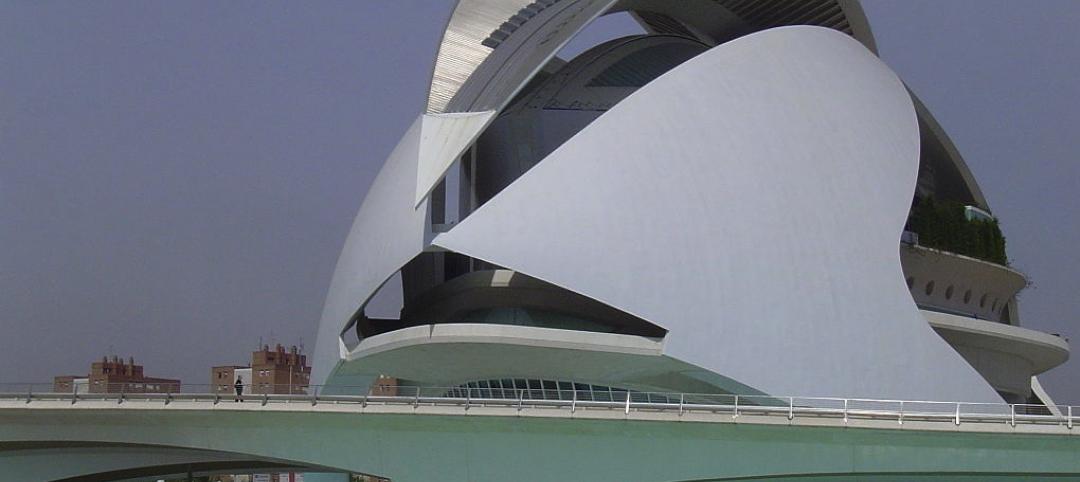 |
||||||||||||||
| The centerpiece of the $12.8 million renovation project is the conversion of the building’s dark, dank second-floor gymnasium into a light-filled fitness center. The 17,000-sf fitness center features all the amenities of a modern workout center—cardio machines, free-weight stations, circuit machines, dumbbells, a spinning room, and workout and classroom space—all situated snugly within the historic gymnasium. | ||||||||||||||
| At a time when institutions of higher learning are spending tens of millions of dollars erecting massive, cutting-edge recreation and fitness centers, Dartmouth College in Hanover, N.H., decided to take a more modest, historical approach. Instead of building an ultra-grand new facility, the university chose to
The centerpiece of the $12.8 million renovation project is the conversion of the building’s dark, dank second-floor gymnasium into a light-filled fitness center. Designed by Lavallee Brensinger Architects of Manchester, N.H., the 17,000-sf fitness center features all the amenities of a modern workout center—cardio machines, free-weight stations, circuit machines, dumbbells, a spinning room, and workout and classroom space—all situated snugly within the historic gymnasium. The gym’s 1970s-era suspended ceiling system was removed to reveal 10 steel trusses that now cap the space in dramatic fashion. During the day, natural light floods the interior through replacement clerestory windows that mimic the originals. At night, the interior lighting scheme highlights the massive trusses and emphasizes the vast volume of the space. To meet ADA accessibility standards, the Building Team created a new, universally accessible route to the front door that maintains the historic character of the entrance. A long, sweeping walkway designed at less than a 1:20 slope permits easy access to the building and is free of obtrusive railings. The original tri-part front steps were replaced with a wider, front-entrance staircase that can better handle crowds during periods of peak use. Inside, a new oversized elevator provides access to all public floors of the building. The elevator also serves as a key design element of the lobby and fitness center, with detailed enclosures at each level. The Reconstruction Awards judges praised Dartmouth for reviving the campus landmark and were especially pleased with the university’s decision to have the building live on as center for fitness and recreation. “There are so many facilities like this that have been converted for different use,” said Reconstruction Awards honorary chair Walker C. Johnson, FAIA, principal with Johnson Lasky Architects, Chicago. “I like the fact that they chose to update it for its original use.” |
||||||||||||||
Project Summary Alumni Gymnasium Renovation, Dartmouth College Hanover, N.H. Building Team Submitting firm: Lavallee Brensinger Architects (architect, interior architect) Associate architect: HOK Sport Structural engineer: McFarland Johnson Inc. Mechanical/electrical engineer: Hallam-ICS Construction manager: North Branch Construction General Information Size: 140,000 sf Construction cost: $12.8 million Delivery method: CM at risk |
Related Stories
| May 30, 2014
Riding high: L.A., Chicago working on their version of the High Line elevated park
Cities around the U.S. are taking notice of New York's highly popular High Line elevated park system. Both Chicago and Los Angeles are currently working on High Line-like projects.
| May 29, 2014
7 cost-effective ways to make U.S. infrastructure more resilient
Moving critical elements to higher ground and designing for longer lifespans are just some of the ways cities and governments can make infrastructure more resilient to natural disasters and climate change, writes Richard Cavallaro, President of Skanska USA Civil.
| May 23, 2014
Big design, small package: AIA Chicago names 2014 Small Project Awards winners
Winning projects include an events center for Mies van der Rohe's landmark Farnsworth House and a new boathouse along the Chicago river.
| May 23, 2014
Top interior design trends: Gensler, HOK, FXFOWLE, Mancini Duffy weigh in
Tech-friendly furniture, “live walls,” sit-stand desks, and circadian lighting are among the emerging trends identified by leading interior designers.
| May 22, 2014
No time for a trip to Dubai? Team BlackSheep's drone flyover gives a bird's eye view [video]
Team BlackSheep—devotees of filmmaking with drones—has posted a fun video that takes viewers high over the city for spectacular vistas of a modern architectural showcase.
| May 22, 2014
IKEA to convert original store into company museum
Due to open next year, the museum is expected to attract 200,000 people annually to rural Älmhult, Sweden, home of the first ever IKEA store.
| May 21, 2014
Gehry unveils plan for renovation, expansion of Philadelphia Museum of Art [slideshow]
Gehry's final design reorganizes and expands the building, adding more than 169,000 sf of space, much of it below the iconic structure.
| May 20, 2014
Kinetic Architecture: New book explores innovations in active façades
The book, co-authored by Arup's Russell Fortmeyer, illustrates the various ways architects, consultants, and engineers approach energy and comfort by manipulating air, water, and light through the layers of passive and active building envelope systems.
| May 19, 2014
What can architects learn from nature’s 3.8 billion years of experience?
In a new report, HOK and Biomimicry 3.8 partnered to study how lessons from the temperate broadleaf forest biome, which houses many of the world’s largest population centers, can inform the design of the built environment.
| May 19, 2014
Calatrava wins court case concerning 'Calatrava bleeds you dry' website
A judge has ordered the left-wing political party Esquerra Unida to pay €30,000 to Santiago Calatrava because of "insulting and degrading" website.

















